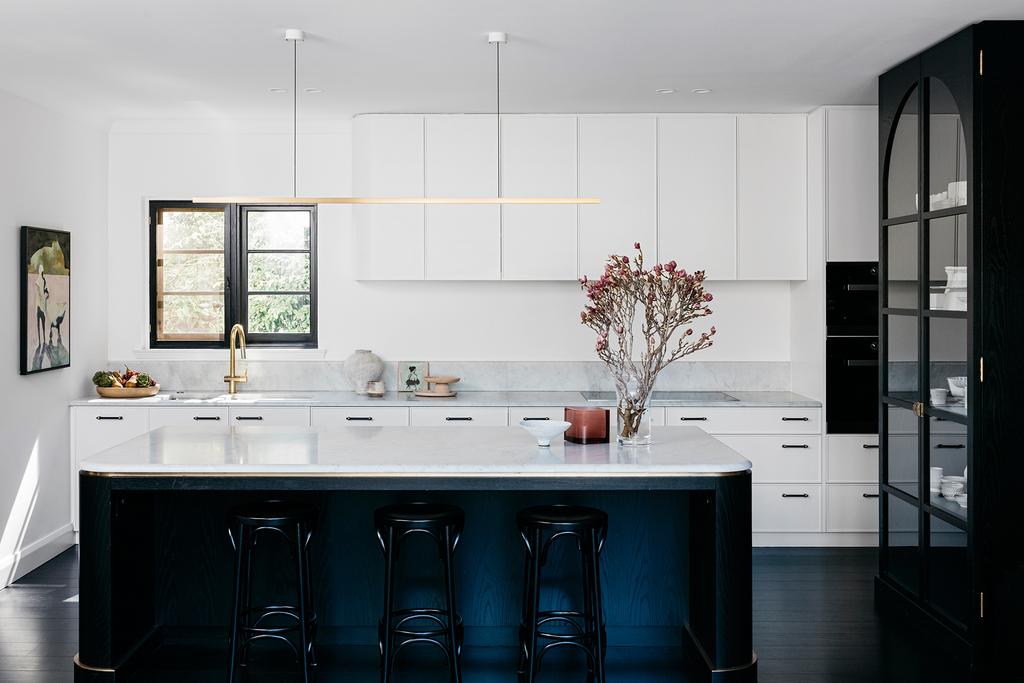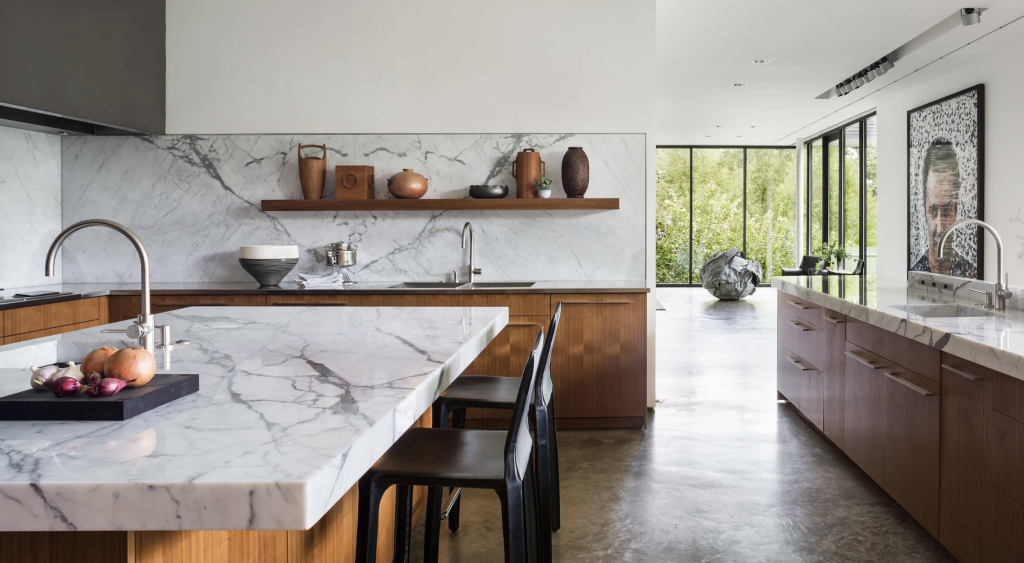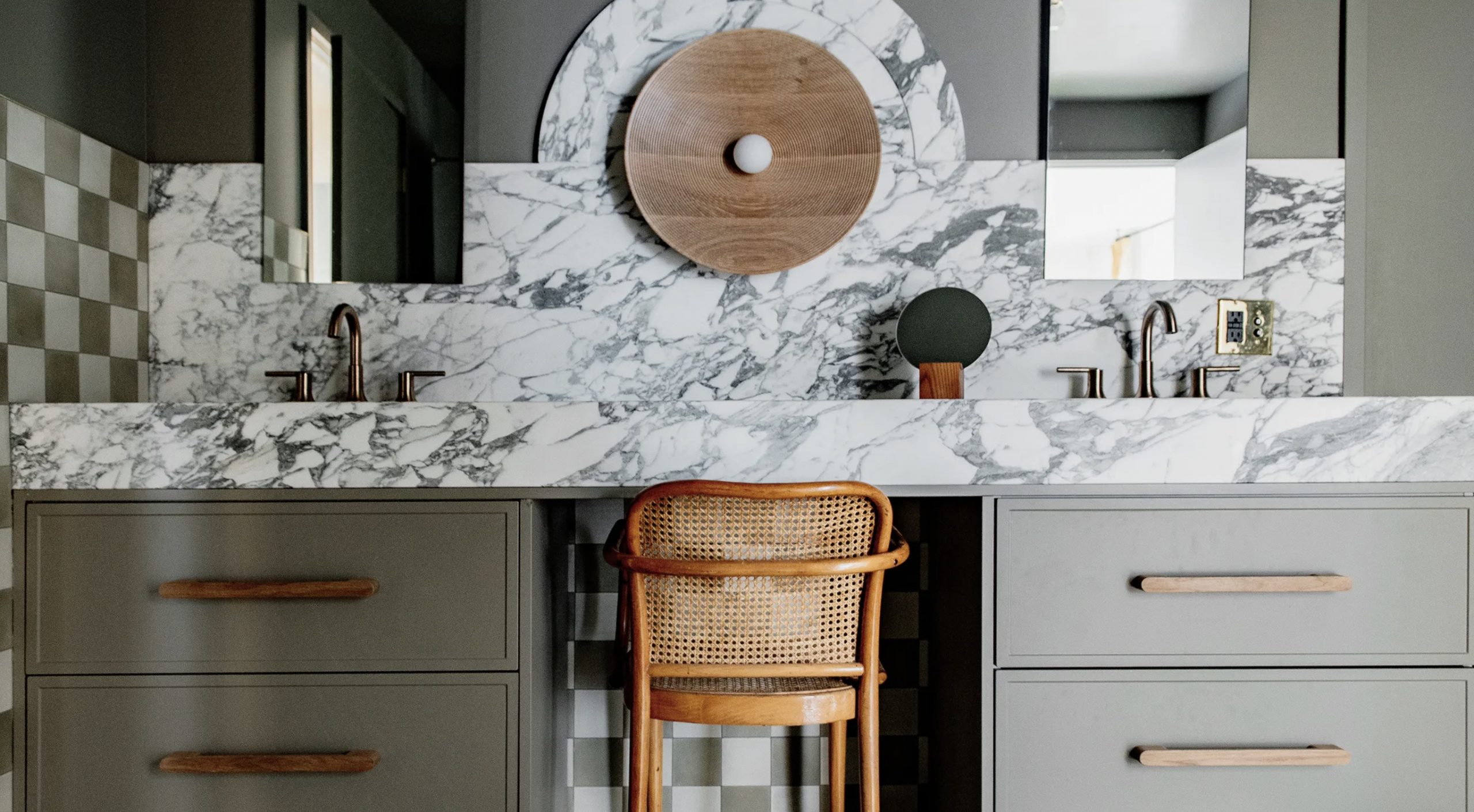Marble is a hard crystalline form of limestone that is frequently used in interior design and architecture. With its versatile aesthetics, marble is the go-to stone that is used to make stunning furniture pieces, accessories, flooring, countertops and sculptures. Then why does it get such a bad reputation? From how to maintain it to every functional use in between, let’s dive into the magic of marble.

Versatility
The versatility of marble makes the design process that much more splendid. Not only can it be used for accessories and accent pieces, but the vast number of surfaces that marble can cover increases how the multifaceted stone is used. From kitchen floors to restroom walls, the use of marble adds a sense of sophistication and elegance to an often utilitarian space.
The book, Splendor of Marble: Marvelous Spaces by the World’s Top Architects and Designers (Rizzoli) does an incredible job at displaying the design spectrum for marble. The stunning rooms showcase polished marble slabs used as kitchen countertops and accent walls in living spaces. There is even mention of a “bathtub carved from a single eight-foot block of Pele de Tigre marble from Portugal.” If you are still not convinced, Vogue Living Australia shows us 26 ways to use marble in your kitchen, from bench tops, to backsplashes to wall facades.
Can we go back to the marble accessories for a bit? There are some pieces that we stumbled upon that are absolutely to die for! They are slightly over the top, but who doesn’t love a bit of design pomp and circumstance.


Maintenance and Care
Protecting your marble (specifically on any usable surface) from etching, scratching, staining and wear and tear takes effort, adding some validity to the “bad wrap” we mentioned above. However, marble isn’t impossible to maintain. With some simple precautionary steps, your marble surface can have a long, healthy life span allowing you to continue to appreciate its beauty for generations.
SEAL
Marble is a naturally porous material so sealing is imperative to keep any stains or liquids at the surface level. A fabricator can help you decide which sealant is best for your marble. If you do not know whether your stone needs a sealant, there is a quick test that you can do. Place a few drops of water on your marble surface. If the water drops stay beaded on the surface, you are good. If the water drops seep into the surface, it is time to re-seal.
PROTECT
You must protect marble from acidic substances like vinegar, tomatoes and citrus fruits as well as liquids that cause staining like coffee or red wine. Treat your marble like fine wood and avoid contact with any harsh items.
SPOT CLEAN
If you do have to clean your marble surface, make sure you do it quickly before the stain settles. Do not use abrasive cleaners. Find a pH-neutral cleaner and spot clean the area.
REPAIR
If your marble chips, cracks or breaks, repair it in a timely manner. As a natural element, marble is susceptible to being damaged. If left untreated, the cracks can deepen and the chips and breaks can continue to erode. As soon as damage is noticed, contact a reputable vendor that specializes in marble repair.

Know Your Marble
Despite the plethora of pros and cons, the important thing to remember is that you must know your marble. Architectural Digest gives some great tips to follow that’ll help you decide whether marble is the surface for you such as sticking to a white marble if you are concerned about staining since most etching (surface stains) leave a whitish mark. Or matching the slab edges to ensure the veins lineup when having to use more than one slab.
It even takes it a step further by suggesting you know the origin of your marble to validate its authenticity. True Calacatta marble originates in Italy, yet replica material is often brought in from China with similar design patterns. You should also not forget to look at the structural integrity of your slab. Cracks are bad. It shows signs that the slab could have been dropped or damaged in transport. However, fissures may be okay. They are a naturally occurring feature in marble and do not change the plane of the stone’s surface. If you notice something and do not know whether it is a crack or fissure, we have a simple test for you. Trace your fingernail across the surface of the stone. If it’s a crack, the nail will catch at the fault line. If it is a fissure, it’ll glide right over.
Now you are equipped with the knowledge necessary to make an informed decision about marble and whether it is right for your home. After reading our post, do you think marble is the surface for you? Let us know!









